The Hutchinson Environmental Program, named in honor of G. Evelyn Hutchinson, the father of modern ecology, supports the environmental priorities identified in Yale’s strategy to advance the sciences. The program aims to enable creative collaborative research in the environmental sciences at Yale by facilitating the development of academic excellence at the postdoctoral level. This format develops the framework established by the first Hutchinson call (from Fall 2019) by segueing the program into an annual and continuing program. These are two-year postdoctoral fellowships (contingent on success in year one) with a starting salary of $68,500, plus up to $10,000 for research and travel. Funds will also be available to support cohort projects, symposia, workshops, and training in science communication.
2024 - 2026 Research Clusters
Click on the box below to learn about the research theme and corresponding Yale faculty mentors.
- Cluster V - Linking The Built Environment, Greenspace, Energy, Climate, and Health
-
In the context of unprecedented global urbanization, with urban populations projected to reach 68% by 2050, both urban infrastructure and vegetation are integrally related to the most pressing environmental crisis of our time—climate change. Current urban infrastructure is energy- and pollutant-intensive, representing an important opportunity for innovative green building solutions, while urban vegetation presents a critical opportunity to mitigate the urban heat island effect, improve air quality, and provide social, cognitive, and physical benefits to inhabitants. To date, green buildings and outdoor greenspace have been primarily researched separately. Our YIBS Hutchinson Cluster employs an interdisciplinary, collaborative effort to synergistically investigate how indoor and outdoor greenspace impact human health and well-being in the context of environmental quality, energy use, and climate.
Affiliated Faculty

Michelle Bell
Mary E. Pinchot Professor of Environmental Health, Yale School of the Environment
Dr. Bell’s research examines how human health is affected by environmental conditions, including air pollution and weather. Other research interests include the health impacts of climate change and environmental justice. Much of this work is based in epidemiology, biostatistics, and environmental engineering. The research is designed to be policy-relevant and contribute to well-informed decision-making to better protect human health and benefit society.
Anna Dyson
Hines Professor of Sustainable Architectural Design, Yale School of Architecture
Professor at Yale School of the Environment
Director, Yale Center for Ecosystems in Architecture (Yale CEA)
Dyson is the founding Director of the Yale Center for Ecosystems in Architecture (Yale CEA), a research initiative that integrates interdisciplinary labs across campus to collaborate on the research, development and deployment of novel architectural systems that are focused on the challenge of metabolizing energy, water and materials within architecture in radically new ways. Recipient of the Innovator Award from Architectural Record, Dyson holds many international patents on building systems innovations for the collection and distribution of clean energy, water, air quality and material life cycle. Her work has been exhibited internationally at venues including the Museum of Modern Art (MoMA), The World Future Energy Summit (WFES), and The Center for Architecture.
- Cluster VI - Predicting Ectotherm Responses to Climate Warming: Integrating Behavior, Physiology, Genomics, and Life History in Amphibians and Reptiles
-
Climate warming can increase body temperature of ectothermic animals, accelerate metabolism, affect reproduction, and induce mortality by overheating. Ectotherms may buffer rising environmental temperatures through thermoregulatory behavior or phenotypic adaptation. Yet, our ongoing work with lizards and frogs suggests that behavioral and physiological adjustments are unlikely to operate in tandem. Ectotherms with active thermoregulation limit thermal selection on their upper thermal limits. By contrast, ectotherms with thermal passivity have shifted their physiology over time, a product of strong thermal selection. These initial discoveries indicate that thermoregulation constrains physiological adjustment. This Hutchinson project aims to build an integrative framework to expand our predictive capacity under climate change. We are interested in (1) linking thermal behavior and physiological evolution of amphibians and reptiles using a macroevolutionary approach, (2) performing temporal comparisons of behavior, physiology, and life history in wild populations, and (3) identifying the genetic signatures of thermal adaptation.
Affiliated Faculty

Martha Muñoz
Assistant Professor of Ecology & Evolutionary Biology
Assistant Curator of Vertebrate Zoology (Herpetology), Yale Peabody Museum
My lab focuses on the evolutionary physiology of reptiles and amphibians. Specifically, we study how these organisms interact with their thermal and hydric environments, and discover how those interactions structure evolutionary patterns of phenotypic and lineage diversity. Based on our discoveries, we infer how vulnerability to ongoing global change is spatially and phylogenetically structured to identify priorities for conservation.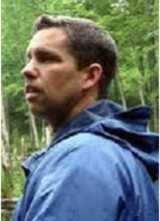
David Skelly
Frank R. Oastler Professor of Ecology, Yale School of the Environment
Professor of Ecology & Evolutionary Biology
Director, Yale Peabody Museum
We study the mechanisms that underly distribution and abundance of organisms with a particular focus on the interaction between ecological and evolutionary mechanisms. Much of our work has been on amphibians including the ways in which human modified environments affect populations.
2023 - 2025 Research Clusters
Click on one of the boxes below to learn about the research themes and corresponding Yale faculty mentors.
- Cluster III - The Genomic Basis of Climate Resiliency
-
Current climate models predict more extreme and variable temperature and precipitation regimes, and hotter, more extreme droughts are a leading cause of widespread forest mortality. Despite their central role in plant ecological adaptation, potential variation in complex physiological processes such as drought tolerance are rarely surveyed at a population level. Furthermore, we know very little about either the genetic basis or potential plasticity of plant drought tolerance. This is problematic, because if and how species will adapt to climate change depends in large part on the amount and distribution of genetic variation for ecologically relevant traits. This project seeks to bridge global ecology and evolutionary genetics by exploring the genetic architeture and within species variation of plant drought tolerance.
Affiliated Faculty

Craig Brodersen
Professor of Physiological Plant Ecology, Yale School of the Environment
My lab group is focused on structure-function relationships in the transport systems in plants; specifically, the vascular systems and their linkage to the evaporative and absorptive surfaces in leaves. We use a combination of methods, including high-resolution X-ray microCT imaging, to study these systems in three-dimensions and in-planta as a means of characterizing physiological thresholds during stressful events like drought. Another long-term goal of our research program is to understand how the natural diversity in photosynthetic and hydraulic systems of plants might be used for the design of novel materials and designs to mitigate rising atmospheric CO2.
Jennifer Coughlan
Assistant Professor of Ecology & Evolutionary Biology
The Coughlan lab seeks to understand the process of speciation and adaptation by integrating field work, common garden experiments, development, and quantitative and population genomics. We focus on a wild flower genus, Mimulus.

Erika Edwards
Professor of Ecology & Evolutionary Biology
Curator-in-charge of Botany and Paleobotany, Yale Peabody Museum
Director, Marsh Botanical Gardens
My lab group studies the evolutionary origins of complex trait syndromes in plants. We are especially drawn to traits that result from convergent evolution: phenotypes that have arisen many times, in distantly related lineages and within different evolutionary contexts. Our approach is centered on the concept of developing “model lineages” for macroevolution. Our work is highly integrative, and we are typically engaging in some combination of phylogenetics, physiology, anatomy, genomics, and field ecology to answer our questions. We tend to focus on traits that have played especially prominent roles in the adaptation of plant lineages to novel environments. For example, we have worked for some time on the evolution of different photosynthetic systems in plants, and how their evolution is connected to the global carbon cycle. We are also interested in evolutionary transitions between tropical and temperate forests, and between desert and alpine environments. - Cluster IV - Mechanisms and Trajectories of Post-Disturbance Recovery in Tropical Forests
-
Tropical forests hold over half of the world’s biodiversity and play a critical role in regulating Earth’s climate, but also face some of the highest rates of land-use change. More than half of the world’s tropical forests are currently in a state of recovery following human disturbance. This includes secondary forests undergoing sucessions after deforestation for agriculture, as well as mature forests recovering from degradation from logging or recent shifts in fire regimes. While understanding the trajectories of recovery is critical for conservation and climate mitigation, two outstanding questions remain largely unanswered. First, how below and aboveground feedback influence forest recovery pathways and their biodiversity trajectories. Second, how environmental and biological filters shape forest vulnerability to compounding disturbance events associated with droughts, blowdowns, wildfires, and edge effects. Addressing these questions will advance our understanding of underlying biotic mechanisms driving successional dynamics and the potential consequences for forest functioning and biodiversity.
Affiliated Faculty

Paulo Brando
Associate Professor of Ecosystem Carbon Capture, Yale School of the Environment
My lab group’s research aims to identify ecological thresholds beyond which global changes cause abrupt, prolonged degradation of terrestrial ecosystems by stressing, disturbing, and killing forests, and to quantify ecological & climatological boundaries for tropical agricultural expansion and intensification.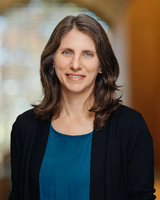
Liza Comita
Professor of Tropical Forest Ecology, Yale School of the Environment
Co-Director, Yale Center for Natural Carbon Capture
In my lab, we study the mechanisms driving patterns of plant diversity, dynamics, and species distributions in both pristine and human-altered forest ecosystems. We are particularly interested in how interactions between plants and their natural enemies (e.g. pathogens, herbivores) will be altered by human impacts on the environment (e.g. climate change, fragmentation, past land use, selective logging, hunting, etc.). We are also interested in determining the extent to which forest restoration and avoided deforestation, especially in the tropics, can contribute to climate mitigation while simultaneously enhancing biodiversity conservation and local livelihoods.
Michelle Wong
Assistant Professor of Ecology & Evolutionary Biology
Our lab is interested in how plants and microbes interact with nutrient availability to shape terrestrial ecosystem responses to global change. More specifically, how terrestrial ecosystems overcome nutrient limitation to facilitate carbon storage in plant biomass and soils, and how our findings can inform ecosystem management and restoration efforts.
2022 - 2024 Research Clusters
Click on one of the boxes below to learn about the research themes and corresponding Yale faculty mentors.
- Cluster I - Deep Learning and Image Processing for Transformational Environmental Science
-
This cluster focuses on the application of Image Processing and Machine Learning to a range of problems in Environmental/Ecological Sciences. High-resolution imaging sensing has enabled the production of huge amounts of data that is informationally-dense and relatively easy to share. A number of promising opportunities exist to leverage these. Using traditional image processing techniques such as object detection and segmentation, for example, a wide range of modelling activities can be performed in order to quantify various aspects of plants and animals such as for phenotyping or other classification activities. Furthermore, with the increased proliferation of high quality and inexpensive sensors comes a proportional increase in the amount of data from them that must be analyzed. There are a number of directions at the intersection of machine learning and signal processing that are very promising, allowing functions such as automatically “filtering” datasets (such as to remove uninteresting clips), processing for automatic ID of animals, and many more.
Project I - Deep Learning for Automated Plant Phenotyping
Climate-related phenotypic changes in plants are perhaps most prevalent in leaves, where evapotranspiration, temperature regulation, and photosynthetic intensity are adjusted with changes in leaf appearance, such as size, shape, length to width ratio, and apex, base, lobing, and tooth form. This project would leverage Herbarium digitization efforts, which, over the past two decades have resulted in the availability of millions of images of herbarium specimens. Using these collections, we will apply modern computer vision and data-driven machine learning approaches to automatically extract leaf contours and quantify their phenotypic properties. By assembling large datasets of extracted phenotypes with their corresponding climate data, we will perform large-scale analysis of correlations between leaf phenotypes and climate conditions at massive and unprecedented taxonomic and geographic scales.

Affiliated Faculty
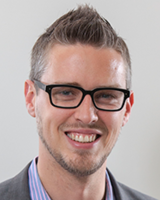
Aaron Dollar (Primary Advisor)
Professor of Mechanical Engineering & Materials Science & Computer Science, School of Engineering & Applied Science
Prof. Dollar is a roboticist with interests in the ways that tools from a range of applied computing areas (e.g. machine learning, image and signal processing, sensing, and robotics) can be applied to a broad range of problems in Ecology, Environmental Science, and Evolutionary Biology. Prior and ongoing work has focused on functional morphology of hands and grasping (in humans, non-human primates, and birds), and current work focuses on use of drones for environmental monitoring as well as machine learning for automated classification of herbaria specimens.
Collaborators:
Dr. Nelson Rios
Head of Biodiversity Informatics Research, Yale Peabody Museum
Dr. Patrick Sweeney
Senior Collections Manager, Botany, Yale Peabody Museum
Project II - Texture Based Analysis of Environmental Image Data
Textural information in images can provide a rich suite of information about the content that isn’t immediately apparent from simpler image characteristics such as color or saturation. This theme includes two projects related to texture: 1) Correlating animal health metrics - texture in images, such as from a trap camera campaign, to information about the health of the individual animals documented. 2) Remote sensing landscapes - Differentiating plantation vs natural forest regeneration in tropical forest landscapes from satellite images, for instance, is not yet possible through traditional approaches. Texture-based approaches can likely resolve remote sensing images to a much greater extent than currently possible.
Affiliated Faculty

Holly Rushmeier (Primary Advisor)
John C. Malone Professor of Computer Science, Yale University
My research is in the development and application of methods for generating photorealistic computer graphics imagery. My group works on imaging for documentation and analysis of both cultural and natural heritage. We extract models of texture and geometry from images and use realistic synthetic images in machine learning for image interpretation.

Liza Comita
Professor of Tropical Forest Ecology, Yale School of the Environment
Co-Director, Yale Center for Natural Carbon Capture
My research addresses both fundamental and applied questions in the field of plant community ecology, with an emphasis on understanding the drivers of biodiversity in both intact and human-altered forest ecosystems. Much of my research focuses on forest understory dynamics and species coexistence in tropical tree communities. In my lab, we use a variety of approaches to address our research questions, including long-term observational studies, field and greenhouse experiments, and computer simulations.

Nyeema Harris
Knobloch Family Associate Professor of Wildlife and Land Conservation, Yale School of the Environment
Director, Applied Wildlife Ecology (AWE) Lab
Harris’s research explores carnivore behavior and movement, ecology and conservation in urban systems and national parks at a global scale with ongoing projects throughout the Americas and Africa. Her work focuses on the myriad of nature’s antagonisms including parasitism, competition, human-wildlife conflict, and predation. She examines spatial and temporal variations in species interactions, how interactive networks are structured, and the ecological consequences of species loss and land-use change.
- Cluster II - Trophic Ecology of African Savannas
-
African savanna ecosystems are at the brink of an ecological transformation. Woody plants are encroaching due to changes in fire management, forcing by climate and [CO2], and misguided afforestation schemes. Fire – an integral part of grassy systems, often conceptualized as another ‘consumer’ of productivity – is decreasing in extent. Wild megafauna faces increasing pressures from fragmentation, hunting, and infectious disease, threatening the last extant community of large herbivores on Earth. Meanwhile, proponents of natural climate solutions increasingly identify these diverse and ancient savanna ecosystems as ‘degraded’ and have targeted them for afforestation and transformation (billed as ‘restoration’), accelerating threats from global change and agricultural transformation. These proposals have gained traction, just as they have marginalized local communities and scientists. This cluster aims to create a community of African ecologists at Yale, bringing together three research groups interested in trophic interactions in African savanna ecosystems and recruiting postdocs to create a cluster for the study of African savanna ecology.
Affiliated Faculty

Vanessa Ezenwa
Professor of Ecology & Evolutionary Biology
Vanessa Ezenwa is a disease ecologist who investigates the drivers and consequences of infectious diseases in mammals, with a particular focus on African herbivores.
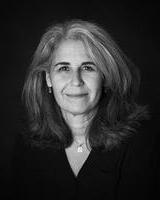
Jennifer Marlon
Research Scientist and Lecturer, Yale School of the Environment and Yale Program on Climate Change Communication
Jennifer Marlon is a Quaternary paleofire ecologist with extensive experience in synthesizing paleoecological records to evaluate regional-scale fire dynamics.

Carla Staver
Associate Director, Yale Institute for Biospheric Studies
Associate Professor of Ecology & Evolutionary Biology
Carla Staver is an ecologist with a long-standing interest in how fire and herbivory influence the distribution, structure, and dynamics, especially of tropical savanna vegetation.
2020 - 2022 Research Themes
Click on one of the boxes below to learn about the research themes and corresponding Yale faculty mentors.
- Theme I - Environment and Evolution
-
Human-accelerated environmental changes are affecting the flux of energy and nutrients in ecosystems, in many cases by altering the structure and function of species interactions. We are seeking candidates whose research addresses how species interactions are reshaped by ecological and evolutionary responses to environmental change and/or how this reshaping determines processes and patterns at larger scales. Successful applicants will work in a highly collaborative environment around themes including, but not limited to: (1) eco-evolutionary dynamics in ecosystems driven by human-accelerated change; (2) the genomic basis of evolving species interactions; and (3) contemporary effects of environmental change from a paleoecological perspective.
Faculty lead for Theme I: David Vasseur, Department of Ecology & Evolutionary Biology. Other relevant faculty are affiliated with the Yale School of the Environment, and the Departments of Earth and Planetary Sciences and Anthropology.
Affiliated Faculty

Liza Comita
Professor of Tropical Forest Ecology, Yale School of the Environment
Co-Director, Yale Center for Natural Carbon Capture
In my lab, we study the mechanisms driving patterns of plant diversity, dynamics, and species distributions in both pristine and human-altered forest ecosystems. We are particularly interested in how interactions between plants and their natural enemies (e.g. pathogens, herbivores) will be altered by human impacts on the environment (e.g. climate change, fragmentation, past land use, selective logging, hunting, etc.). We are also interested in determining the extent to which forest restoration and avoided deforestation, especially in the tropics, can contribute to climate mitigation while simultaneously enhancing biodiversity conservation and local livelihoods.
Pincelli Hull
Associate Professor of Earth and Planetary Sciences
Associate Curator of Invertebrate Paleontology, Yale Peabody Museum
My research focuses on understanding the causes and consequences of major environmental change in earth’s history and how these events relate to evolution of life and ecosystems. My work centers on reconstructing the history of the open oceans because of the relatively resolved environmental and biotic records provided by microfossils over the last ~150 million years. From these records, we reconstruct past climatic and oceanographic dynamics, the causes and consequences of mass extinctions, and the response of life to environmental change large and small.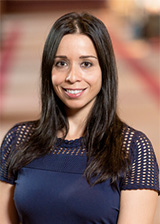
Martha Muñoz
Assistant Professor of Ecology & Evolutionary Biology
Assistant Curator of Vertebrate Zoology (Herpetology), Yale Peabody Museum
The Muñoz lab studies how organisms behaviorally interact with their environments and how those interactions impact micro- and macroevolutionary patterns of diversity. We use our discoveries to make informed predictions of species’ vulnerability to ongoing global change. Some ongoing research themes in the lab are: (1) mechanisms of niche evolution; (2) ecological and evolutionary physiology; (3) spatial patterns of biodiversity; (4) form-function evolution; and (5) behavioral evolution. The Muñoz lab works primarily with terrestrial ectotherms (especially reptiles and amphibians), but is open to other study systems.

David Skelly
Frank R. Oastler Professor of Ecology, Yale School of the Environment
Professor of Ecology & Evolutionary Biology
Director, Yale Peabody Museum
Our lab studies the ecological and evolutionary influences of environmental change on animal populations. We are particularly interested in the means by which species cope with human caused changes such as landscape conversion, the introduction of synthetic chemicals or changing climate. To what extent are persisting species adapting to altered environments and how quickly and at what spatial scales can such adaptation occur? We use long term observations as well as field and laboratory experiments to link pattern to mechanism and we seek understanding that can help us make better decisions about the environment. A lot of the work is on frogs because they live in such a variety of contexts and because they are cool.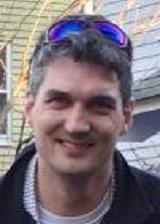
David Vasseur
Professor of Ecology & Evolutionary Biology
Research in my lab incorporates theory and laboratory experiments to study the ecological and evolutionary responses to environmental variation and to the variation that exists amongst individuals. Within this broader focus, two themes currently dominate my lab’s activities. The first is aimed at understanding the consequences of thermal variation in space and time on the fitness of individuals and populations. In addition to models of evolutionary rescue and behavioral microclimate use, we are carrying out experiments to better characterize the ecological effects of thermal acclimation in order to improve ecological forecasts. The second theme aims to characterize how the incorporation of intraspecific variation impacts ecological paradigms such as coexistence and the stability of ecosystems. - Theme II - Climate and Greenhouse Gases
-
Atmospheric levels of CO2, CH4 and N2O are increasing, leading to planetary warming. We are seeking candidates whose research can contribute to our general understanding of the generation and management of greenhouse gases (GHG). Because of growing interest in global methane among a group of Yale faculty, we are particularly interested in building a cohort of postdoctoral fellows who can advance knowledge of the production and control of CH4 losses from natural and human-managed systems. Successful applicants will work in a highly collaborative environment around themes including, but not limited to: (1) GHG fluxes from ecosystems and the energy sector; (2) microbial ecology and evolution relevant to GHGs; (3) GHG pathways in plants; (4) GHG dynamics in deep time; and (5) natural climate solutions.
Faculty lead for Theme II: Peter Raymond, Yale School of the Environment. Other relevant faculty are affiliated with the Departments of Earth and Planetary Sciences, Ecology & Evolutionary Biology, Chemical & Environmental Engineering, and the Yale School of Management.
Affiliated Faculty
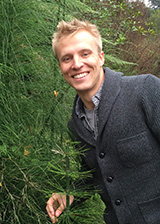
Noah Planavsky
Associate Professor of Earth and Planetary Sciences
Associate Curator of Mineralogy & Meteoritics, Yale Peabody Museum
My lab studies global biogeochemical cycles and how they have changed through time. We are particularly interested in reconstructing the evolution of the extent and scope of the biosphere, and how this has been (and will be) impacted by climate perturbations. We also study how and why atmospheric oxygen, methane, and carbon dioxide concentrations have changed over Earth’s history.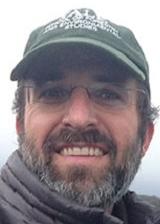
Peter Raymond
Senior Associate Dean of Research and Director of Doctoral Studies, Oastler Professor of Biogeochemistry, Yale School of the Environment
The Raymond lab studies the exchange of greenhouse gases between aquatic systems and the atmosphere. We do this through both field/lab work and regional to global scaling. For this effort we are interested in continuing our effort to increase the knowledge base on what controls methane fluxes from inundated systems and scaling these fluxes from ecosystems to the globe.

Carla Staver
Associate Director, Yale Institute for Biospheric Studies
Associate Professor of Ecology & Evolutionary Biology
Our lab studies how climate, soils, fire, and herbivory interact with vegetation to determine vegetation distributions and dynamics in the Earth system. We focus on savanna and forest ecosystems especially in the tropics, combining field and remote sensing approaches with theoretical and computational modeling to understand mechanisms and generate rigorous predictions for the future of the biosphere.
